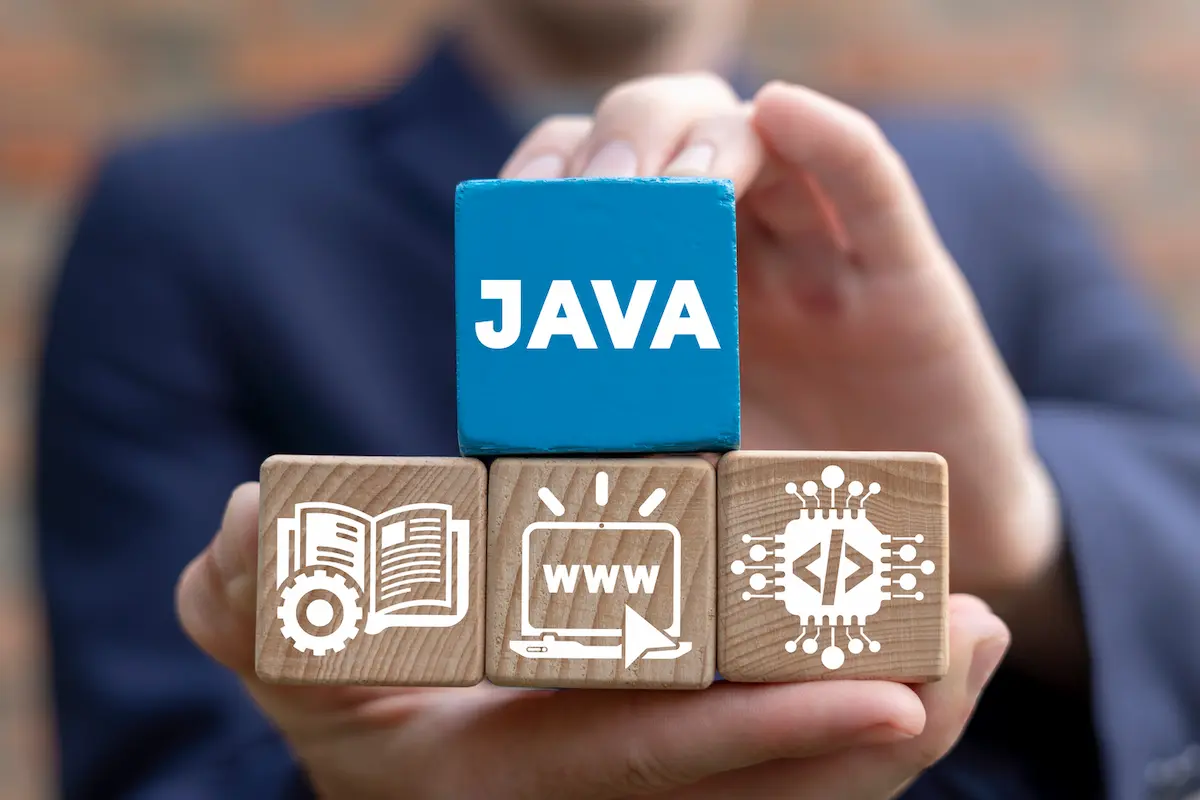Java is at the heart of modern technology, fueling everything from enterprise systems to mobile apps and smart devices. Until recently, Java was the most popular programming language, and it still ranks fourth despite losing the podium to Python. Its adaptability and reliability make it a choice for developers and businesses worldwide. But when it comes to cost, things can get a little murky. How much does Java actually cost, and what are you paying for?
If you’re debating whether to stick with Oracle’s version or switch to free alternatives like OpenJDK, you’re not alone. The good news? We’re here to clear up the confusion. In this guide, we’ll break down the key factors influencing Java pricing—licensing models, subscription fees, and open-source options—so you can make the smartest decision for your needs.
Let’s dive in and get to the bottom of it!

Oracle Java Licensing Changes in 2025
Java powers millions of applications worldwide, from enterprise systems to mobile apps. But Oracle's aggressive licensing changes since 2019 have transformed what was once a free development platform into a costly compliance challenge. Understanding Oracle's new employee-based Java pricing model is critical for any organization using Java in production.
Exploring Java Cost Factors: What Affects Pricing?
Java costs aren't set in stone. The pricing depends on several key factors that can dramatically impact your annual software budget. The shift from usage-based licensing to employee-based subscriptions has caught many organizations off guard.
Oracle vs OpenJDK: Understanding Your Options
Oracle JDK 21 and later is available under the Oracle No-Fee Terms and Conditions License, which permits free use for all users, but this free period is time-limited. Here's how your choices stack up:
Java SE Universal Subscription Oracle's commercial offering now requires licensing every employee in your organization. Recent survey results from Java SE Subscription customers have shown cost savings of approximately 30% over a four-year period, but only when compared to managing multiple Java versions without support.
Alternatives OpenJDK remains free under the GNU General Public License. Popular distributions include Amazon Corretto, Eclipse Temurin, and Red Hat OpenJDK. These options eliminate licensing fees but require you to manage updates and support internally or through third-party vendors.
Oracle's New Employee-Based Pricing Model
Oracle's Java licensing has undergone significant changes since 2019, transitioning from freely available updates to a paid subscription model and, most recently, to an employee-based licensing metric.
The current pricing structure works as follows:
1-999 employees: $15 per employee per month
1,000-2,999 employees: $12 per employee per month
3,000-9,999 employees: $10.50 per employee per month
10,000+ employees: Further volume discounts apply
Many mid-sized companies pay around $8–$12 per user monthly under the new tiered pricing. In effect, the rate per licensed user more than tripled.
Oracle Java Licensing: Key Changes and Implications
In recent years, Oracle's licensing evolution has represented one of the most disruptive changes in enterprise software. The company has systematically moved from free updates to paid subscriptions and now to mandatory organization-wide licensing.
Timeline of Major Changes
2019: End of Free Updates. Starting in April 2019, any commercial use of Oracle Java required a paid subscription. Oracle replaced the old free Binary Code License with the more restrictive Oracle Technology Network (OTN) License.
2021: No-Fee Terms Introduction In September 2021, alongside Java 17 (a Long-Term Support release), Oracle unveiled the No-Fee Terms and Conditions (NFTC) license. This allowed organizations to use Oracle JDK free of charge, including in production, but only for a limited time.
2023: Employee-Based Universal Subscription In January of this year, Oracle significantly changed its Java licensing model. They released a new Oracle Java SE Universal Subscription Global Price List, discontinuing the sale of Oracle Java SE subscriptions based on the Named User Plus and Processor license metrics.
(Looking to streamline your projects? Explore our outsourcing Java development services and discover how our experts can elevate your software solutions.)
Impact on Enterprise Budgets
Organizations may experience a substantial cost increase in some cases; we are seeing customers see their cost jump 3X or 5X relative to their previous cost. The financial impact varies significantly based on organization size and previous licensing approach.
Is Java Free? Understanding Conditions and Limitations
Java availability depends on which distribution you choose and how you use it.
Free Options That Still Exist
OpenJDK is completely free under the GPL license with no commercial restrictions. Major cloud providers offer supported distributions: - Amazon Corretto (AWS) - Microsoft Build of OpenJDK (Azure) - Eclipse Temurin (Eclipse Foundation)
Oracle JDK with NFTC Oracle JDK 21 and later is available under the Oracle No-Fee Terms and Conditions License, which permits free use for all users – even commercial and production use. However, Oracle JDK 21 updates are planned to be made available under the NFTC until September 2026, one year after the next release that Oracle currently plans to offer long-term support for, which is Java 25 in September 2025.
Commercial Use Restrictions
For production environments, the distinction between free and paid Java becomes crucial:
Development and Testing: Both OpenJDK and Oracle Java remain free for development purposes.
Production Deployment: OpenJDK continues to be free for production. Oracle Java requires either using the time-limited NFTC versions or purchasing the Universal Subscription.
Enterprise Support: Organizations requiring guaranteed support must either purchase Oracle's subscription or contract with third-party vendors offering OpenJDK support.
Oracle’s Java Audits and Compliance Tactics
Oracle has significantly ramped up its Java compliance enforcement activities in 2024 and 2025. The company's Global License Advisory Services (GLAS) teams now actively contact organizations to verify Java licensing compliance, even those primarily using alternative distributions like OpenJDK.
These "friendly inquiries" often begin with Oracle representatives asking about Java usage across the organization. However, these conversations frequently serve as precursors to formal license audits. Oracle has adapted the same aggressive audit tactics used for their database products to Java licensing.
During audits, Oracle typically requests:
Complete employee headcount documentation
HR records including contractors and temporary staff
Java installation inventories across all environments
Historical usage data going back three years
Organizations found non-compliant face substantial back penalties. Oracle can impose fees covering three years of past unlicensed usage, calculated using current Universal Subscription rates. For a company with 5,000 employees, back penalties could exceed $1.8 million.
The audit process has become more sophisticated, with Oracle using download tracking data to identify organizations that may have Oracle JDK installations without proper licensing. Even downloading Oracle Java for evaluation purposes can trigger audit attention.

Legacy Java SE Subscription vs. New Employee-Based Licensing
The shift from Oracle's legacy licensing model to the Universal Subscription represents one of the most dramatic pricing changes in enterprise software history.
Previous Licensing Model (Pre-2023)
Oracle's legacy Java licensing operated on consumption-based metrics:
Named User Plus: $2-$2.50 per user per month for desktop installations
Processor-based: Approximately $5,000 per processor core annually for server deployments
Selective licensing: Organizations could limit licensing to actual Java users
Flexible deployment: Separate desktop and server licensing options
Under this model, a typical mid-sized company with 50 Java users and 10 server cores paid roughly $30,000-$50,000 annually.
Current Universal Subscription Model (2023-Present)
Oracle's employee-based model eliminates consumption flexibility:
Universal coverage: Every employee must be licensed regardless of Java usage
Tiered pricing: $15/employee/month (1-999), $12/employee/month (1,000-2,999), $10.50/employee/month (3,000-9,999)
No exceptions: Contractors, temporary staff, and consultants all count as "employees"
Annual commitment: Typically requires 12-month upfront payment
The same mid-sized company with 1,000 total employees now pays $144,000 annually, representing a 300-400% cost increase.
Migration Pressure Tactics
Oracle employs several strategies to force customers onto the new model:
Renewal refusal: Account representatives often refuse to provide renewal quotes for legacy licensing
Support discontinuation: Threatening to end support for customers who won't upgrade
Ultimatums: "Switch to Universal Subscription or lose Java support" messaging
Limited negotiation: Reducing flexibility in contract discussions
Many organizations report being forced into the new model during routine renewal cycles, with little advance warning of the cost implications.
Free Java Still Exists, Options Below:
Despite Oracle's aggressive commercialization efforts, free Java options remain widely available and viable for most enterprise use cases.
OpenJDK Distributions
Several organizations provide free, production-ready Java distributions based on OpenJDK:
Amazon Corretto
Free, multiplatform distribution optimized for AWS
Quarterly security updates and bug fixes
Long-term support for major versions
No licensing costs or restrictions
Eclipse Temurin (formerly AdoptOpenJDK)
Community-driven builds with predictable release schedule
Available for all major operating systems
Extensive testing and quality assurance
Backed by Eclipse Foundation
Red Hat OpenJDK
Enterprise-grade builds with optional paid support
Included with Red Hat Enterprise Linux subscriptions
Available as standalone distribution
Professional support options available
Microsoft Build of OpenJDK
Optimized for Azure cloud environments
Free for all users regardless of cloud choice
Regular security and performance updates
Microsoft support available through Azure channels
Commercial OpenJDK Support
For organizations requiring commercial support without Oracle's employee-based licensing:
Azul Platform Core (formerly Zulu)
Free distribution with optional paid support
Extended support lifecycles available
Performance monitoring and optimization tools
Significantly cheaper than Oracle Universal Subscription
IBM Semeru Runtimes
Based on Eclipse OpenJ9 JVM
Free for development and production use
Optional IBM support contracts available
Enhanced performance characteristics
BellSoft Liberica JDK
Migration Statistics and Trends
Industry surveys reveal a massive shift away from Oracle Java:
80% of Oracle Java customers are migrating or planning migration to alternatives
Only 14% plan to remain on Oracle Java long-term
Primary drivers: cost reduction, licensing simplicity, vendor independence
Average cost savings: 60-90% compared to Oracle Universal Subscription
Organizations successfully migrating report minimal technical challenges, as OpenJDK maintains full compatibility with Oracle JDK for standard Java applications.
For enterprises seeking expert guidance in Java migration or development,professional Java development services can help ensure smooth transitions while maintaining application performance and security standards.







